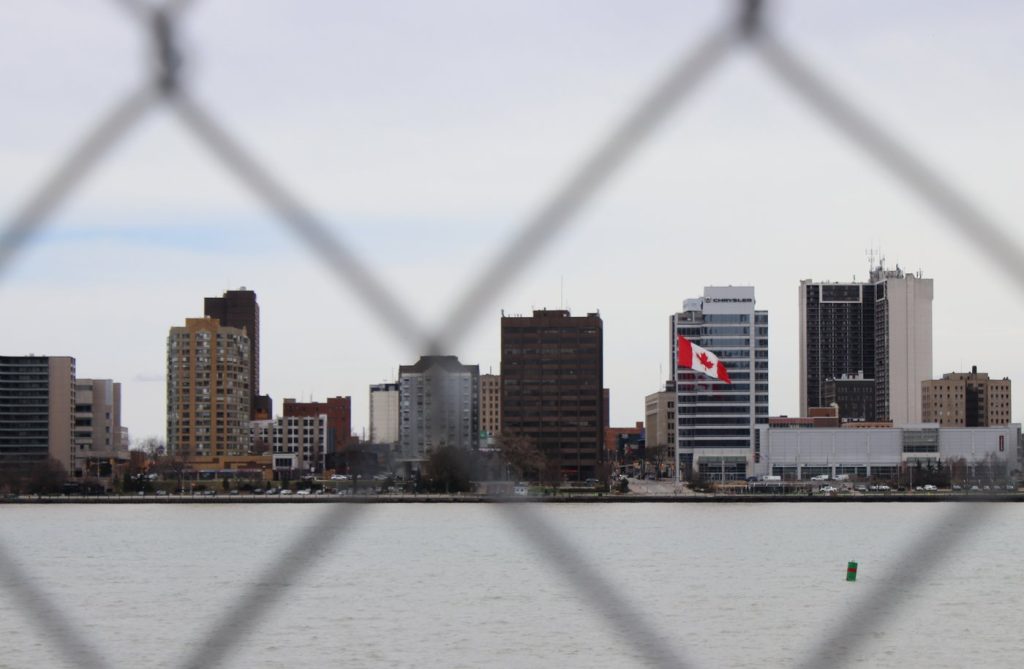New documentary revisits Yonge Street Uprising, 3 decades later

Posted April 28, 2022 10:09 am.
Last Updated April 29, 2022 12:59 pm.
Three decades ago, the brutal beating of Rodney King and the subsequent acquittal of the police officers involved led to violent riots in Los Angeles.
But, in 1992, there was another demonstration that turned to chaos much closer to home. On May 4, a protest along Yonge Street in downtown Toronto turned into a major flashpoint in the acknowledgement of anti-Black racism in the city.
An upcoming Citytv documentary, Veracity: The Yonge Street Uprising, explores how the protest outside City Hall turned into a night of chaos and confrontation between those involved and the Metropolitan Toronto Police Service.
The protest was organized by a group of people frustrated and angered over the death of several Black men at the hands of police in the GTA.
Just days before, 22-year-old Raymond Lawrence had been shot and killed by two Peel Regional Police officers. Before that, in 1988, Lester Donaldson has been shot and killed in his rooming house by an officer with the Toronto Police Service (TPS), who was later charged with manslaughter and acquitted.
Andrew “Buddy” Evans, 24, was killed by a TPS officer in 1978 while Albert Johnson, 35, and Michael Sargeant were shot and killed in 1979.
Several other people had been injured in recent years as well. Sophia Cook, then 23 years old in 1989, was shot in the back while sitting in a car. The officer was later charged and acquitted of careless use of a firearm.
“I turned to look and see what was going on and I felt a warm thing coming down my back and the officer said to me, ‘I shot you.’ Next thing you know I’m in the hospital,” said Cook.
These incidents led to accusations of racial profiling by police and sparked outrage that spilled onto the streets that night.
Rinaldo Walcott was at home when he saw the demonstrations being covered on Citytv. He jumped on his bicycle and rode down to join in.
Walcott is now a University of Toronto professor who has since written about the event and the Black experience at the time. He credits the Black Action Defence Committee (BADC) for its push for justice.
The defence committee, which was started in response to police shootings of Black people, organized the protest.
“There was a protest at city hall or somewhere around the city demanding police accountability, not just in police killings, but just in relation to how police treated Black people. There was a sense of possibility that in fact if we push back hard enough, we can actually change things. We can actually see some accountability,” said Walcott.
Previous protests had been peaceful and while the May 4 demonstrations started that way, it spiralled into property destruction, arrests and fire bombings in the streets.
“What I remember most about that night is the kind of anger that the crowd felt, and I remember getting close to Yonge and Gerrard Streets and hearing the windows starting to break,” explained Walcott.

While some officials have called it a riot, advocates refer to that night has an uprising that revealed the reality of racism in Canada.
“Black people across North America’s biggest cities were really identifying with what was happening in L.A. because so many of North America’s biggest cities had been plagued with the kind of police violence enacted on particularly young Black people.”
And just over a month later, a government-commissioned report on race relations officially acknowledged that anti-Black racism was an issue in Ontario.
However, Walcott explains not enough was done at the time to address the issues.
“The kinds of measures of policy changes they stepped in with were not sustained, so, by the time we go to the 2000s, we were back to the same problems.”
“Canada as a whole has done a really good job at convincing not only Canadians but also the rest of the world that the kind of racial formation and kinds of racial issues that shape other places the U.S., the U.K. and France and so on doesn’t happen here and yet it does.”

Protests held in 2020 in Toronto following the killing of George Floyd in Minnesota and the deaths of Regis Korchinski-Paquet and Jamal Francique in the GTA were reminiscent of the peaceful part of the protests in 1992, where those involved asked for accountability from police and an acknowledgement of anti-Black racism.
On Friday, CityNews will look at what has or hasn’t changed since the uprising and you can watch the full documentary “Veracity: Yonge Street Uprising” on Sunday, May 1, at 10 p.m. EST/9 p.m. MT only on Citytv.








